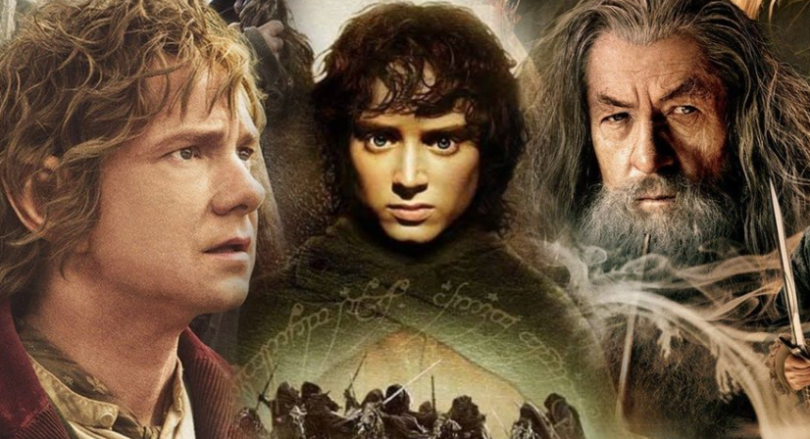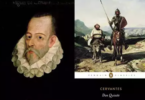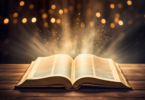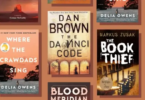The Lord of the Rings by J.R.R. Tolkien: A Timeless Fantasy Epic
J.R.R. Tolkien’s The Lord of the Rings is a cornerstone of modern fantasy literature. Originally published as a trilogy (The Fellowship of the Ring, The Two Towers, and The Return of the King) between 1954 and 1955, this sweeping saga of good versus evil has captivated readers worldwide for decades. Rich in lore, language, and imagination, Tolkien’s work continues to inspire books, films, and games, solidifying its legacy as one of the greatest literary achievements of the 20th century.
The Story of Middle-earth
The narrative is set in Middle-earth, a richly detailed world complete with its own history, languages, and cultures. The story revolves around the One Ring, a powerful artifact forged by the dark lord Sauron to control the free peoples of Middle-earth. After being lost for centuries, the Ring resurfaces and falls into the possession of Frodo Baggins, a humble hobbit from the Shire.
The Journey Begins
Frodo, with the help of his loyal friend Sam and companions Merry and Pippin, sets out on a dangerous journey to destroy the Ring in the fires of Mount Doom, the only place it can be unmade. Along the way, they are joined by a fellowship that includes Aragorn, Legolas, Gimli, Boromir, and Gandalf, each bringing unique strengths to the quest.
A World in Conflict
As Frodo and Sam venture closer to Mordor, the heart of Sauron’s power, Middle-earth descends into chaos. The forces of Gondor and Rohan unite to withstand Sauron’s armies, while alliances are tested and sacrifices are made. The story culminates in a thrilling battle between light and darkness, with Frodo’s perseverance and Gollum’s fateful intervention determining the fate of Middle-earth.
Themes and Symbolism
1. The Struggle Between Good and Evil
The central theme of The Lord of the Rings is the timeless conflict between good and evil. Sauron represents absolute corruption and domination, while the Fellowship embodies hope, courage, and unity.
2. Friendship and Loyalty
At its core, the story is about relationships. The bond between Frodo and Sam highlights the importance of friendship and loyalty, as Sam’s unwavering support helps Frodo overcome seemingly insurmountable challenges.
3. Power and Corruption
The One Ring symbolizes the corrupting influence of power. Its ability to tempt even the noblest characters, such as Boromir and Frodo, demonstrates the destructive nature of unchecked ambition.
4. Hope and Perseverance
Despite overwhelming odds, the characters never lose hope. From Aragorn’s rise as the King of Gondor to Frodo’s determination to complete his mission, the story emphasizes the power of perseverance and resilience.
Tolkien’s World-Building Mastery
One of the most remarkable aspects of The Lord of the Rings is Tolkien’s intricate world-building. Middle-earth feels alive with its richly detailed history, geography, and cultures. Tolkien, a philologist, created entire languages, such as Elvish, and filled the world with legends and songs that lend authenticity to the narrative.
Impact on Literature and Popular Culture
1. Redefining Fantasy
Tolkien’s work redefined the fantasy genre, setting a standard for storytelling, character development, and world-building. Many modern fantasy authors, including George R.R. Martin and Brandon Sanderson, cite Tolkien as a major influence.
2. The Power of Adaptation
Peter Jackson’s film adaptations of The Lord of the Rings trilogy (2001–2003) introduced the story to a new generation of fans. The films, praised for their fidelity to the source material, stunning visuals, and emotional depth, won numerous awards and solidified the story’s place in global pop culture.
3. Cultural Legacy
Beyond books and films, The Lord of the Rings has inspired video games, art, music, and even academic studies. Its universal themes and complex characters resonate with audiences of all ages and backgrounds.
Why Read The Lord of the Rings Today?
- Timeless Themes: The story’s exploration of courage, friendship, and the dangers of power remains relevant to modern readers.
- Immersive Storytelling: Tolkien’s masterful prose and rich descriptions make Middle-earth a world you can lose yourself in.
- A Universal Tale: At its heart, The Lord of the Rings is a story about hope and the triumph of the human (and hobbit) spirit against overwhelming odds.
Conclusion
J.R.R. Tolkien’s The Lord of the Rings is more than a story; it’s an epic journey that speaks to the fundamental struggles and triumphs of the human condition. With its unforgettable characters, profound themes, and unparalleled world-building, the trilogy continues to enchant readers and viewers alike. Whether you’re discovering Middle-earth for the first time or revisiting it, this masterpiece is a testament to the enduring power of storytelling.
Read More: A Tale of Two Cities: Dickens’ Timeless Story of Love, Sacrifice, and Revolution







